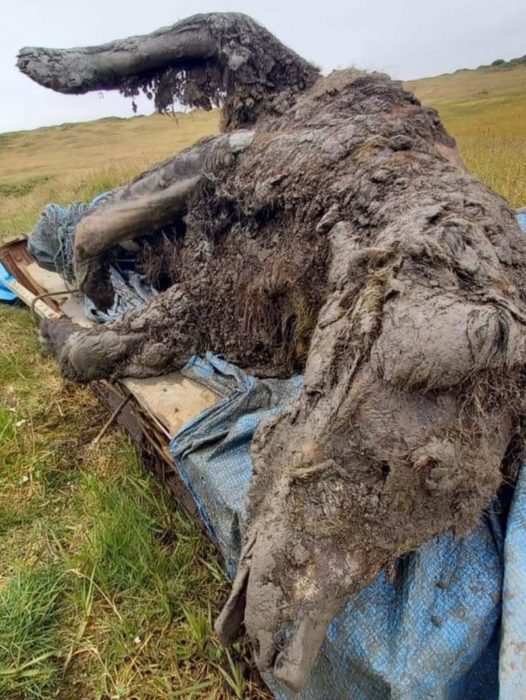Sep 17 2020
Ice Age Bear Found in Melting Permafrost
 On the surface this is a story of a fantastic paleontological find. Reindeer herders discovered a well-preserved brown bear in the Russian Arctic, released from melting permafrost. The bear is intact, with lots of preserved soft-tissue, and is therefore of extreme scientific value.
On the surface this is a story of a fantastic paleontological find. Reindeer herders discovered a well-preserved brown bear in the Russian Arctic, released from melting permafrost. The bear is intact, with lots of preserved soft-tissue, and is therefore of extreme scientific value.
But behind the story there is a deeper and concerning one – wait, isn’t “melting permafrost” an oxymoron? Isn’t permafrost supposed to be permanent? Not exactly. The technical definition of permafrost is any ground that is frozen for at least two years straight. Less than that and it is considered seasonally frozen. But much of the permafrost in the world has been frozen for hundreds of thousands of years. The oldest ice is in Antarctica, believed to be 1.5 million years old.
The bear is estimated to be between 22,000 to 39,500 years old. That is also the age of the ice in which it was frozen, and that ice is melting. The bear is also not the first ice-age remains to be discovered in the Arctic permafrost. In recent years scientists have also found dogs and woolly mammoths melting out of the ice. Of course fluctuations in the extent of the permafrost is nothing new, when we consider the a long time frame. But the Arctic permafrost particularly appears to be melting at an alarming rate. And of course, this is thought to be due to global warming.
Melting permafrost, however, is not just another marker for global warming, it is especially concerning because it may also magnify global warming by being a positive feedback mechanism. Permafrost freezes in place, over hundreds of thousands of years, a tremendous amount of carbon in the form of organic material. This carbon is taken out of circulation, literally frozen in cold storage. As the permafrost melts it releases this previously sequestered carbon. There is also a lot of methane frozen in the ice, and that gets released too. Methane is a more powerful greenhouse gas than CO2, but also has a shorter life in the atmosphere.
It is estimated that as much as 92 billion tons of carbon could be released from melting permafrost between now and 2100. This is 20% of all the CO2 released since the industrial revolution, or about three years of total global emissions at the current rate. Melting ice is a positive feedback loop in another way. Snow and ice are highly reflective, so they reflect a lot of solar energy back into space. When ice melts and is replaced by ground, that ground reflects less light and absorbs more of the energy – again increasing warming. Positive climate feedback loops are especially concerning for obvious reasons.
Melting permafrost is concerning for yet another reason – the ice that is melting is tens of thousands of years old. While this is a boon to paleontology, this also means that this ice took tens of thousands of years to form. As permafrost formed over hundreds of thousands of years it trapped carbon from organic material. As the permafrost melts that carbon gets released, but there is no way to reverse this process on the time scale of human civilization. It would take tens to hundreds of thousands of years to recapture that carbon back into permafrost. Permafrost traps more carbon than exists currently in the atmosphere.
The process of melting permafrost is therefore considered irreversible. This is one of the feedback loops that worries climate scientists – if we get to 2 C warming that will cause feedbacks that get us to 3 C, and so on until we reach a new equilibrium point, which may be somewhere around 6 C warming over pre-industrial levels. This may take hundreds of years, but at some point it becomes unstoppable. We then have to adapt to a much warmer world, with uninhabitable regions due to heat, more droughts, and sea levels about a hundred feet higher than they are today.
So melting permafrost is a critical marker for global warming. We need to take it seriously. Sure, paleontologists will make the best of it, but it’s not a good trade-off. Also, diseases are melting out of the permafrost, not just mammals. That is very much a side phenomenon, but the last thing we need is new infectious agents being released in the world.
The time to slow and stop permafrost melt is 20 years ago. We wasted that opportunity, and now we are trying to play catch up. It may already be too late (that is debatable), but if there is any chance to prevent the unstoppable slide to an inevitable 6 degree C warming, we need to do it now.






